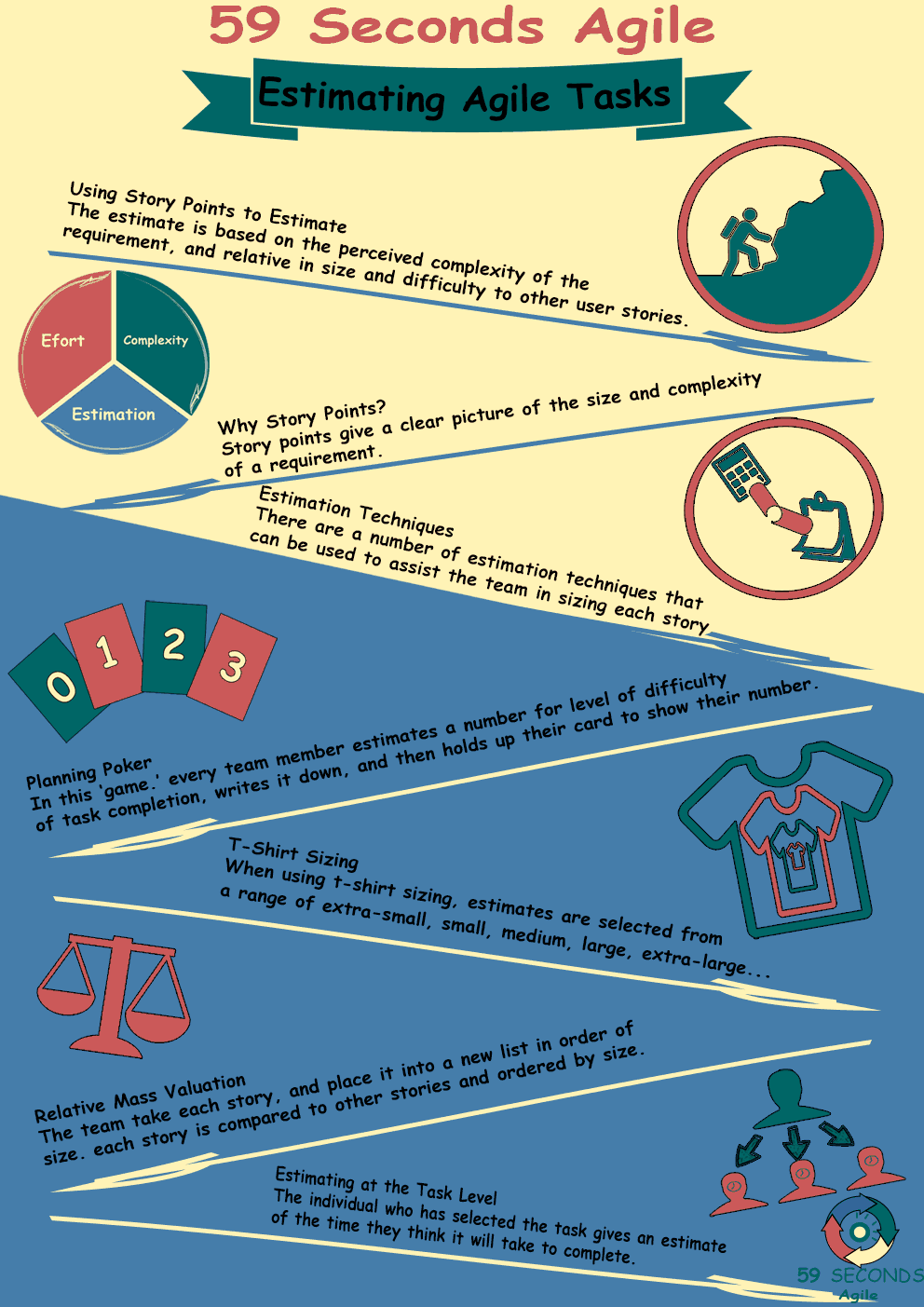What are Scrum Tasks and who is involved in Estimating Tasks? The Development Team play an important role within the estimation of Scrum tasks within an Agile project.
Estimating Scrum Tasks
A 59 Seconds Agile Video Animation
Estimating Scrum Tasks for Developers – Part 2
A 59 Seconds Agile Article
Since developers work on tasks so frequently, they have a better understanding of how large and complex a task is. Issues and unexpected problems aside, developers will usually have a more accurate estimation of a task. Other roles may be able to pick up on this over time, but rarely will they have the intuition for estimation that developers have.
Estimating Tasks as a Team
Even better than having individual developers create estimations, is a team of developers. With multiple developers giving estimates for the same tasks, these estimates can be averaged out. Having developers of multiple skill levels means that tasks don’t usually run too high or low. Veteran developers and novice developers might deviate from the norm, so a group can reduce the outliers.
One of the most popular tactics for estimation is Planning Poker. No, it doesn’t involve money and cards. Planning Poker is a system for developers to estimate tasks without feeling intimidated by their decision. Developers are given cards with different number values printed on them. If the Scrum team uses the Fibonacci sequence, cards might include 0, 1, 2, 3, 5, 8, and 13. If a request includes larger tasks, cards may often include numbers like 21, 34, 55, and 89 to represent very large tasks.
Estimating Tasks: Discussing Requirements
After discussing a task, developers each put in a card for their estimation. Once every developer has put a card in, all cards are revealed at once. This anonymous contribution means that developers can be honest about their estimate. A novice developer that thinks a task might be very complicated can confidently rate it an 8, 13, or higher without fear of being shamed. Also, this gives a clear indication of misunderstanding a spec. If there is a widespread of values or specific outliers, the team can discuss these estimates further. One developer may estimate particularly high if he or she knows of an issue that the others didn’t think of.
Estimating Tasks: Value
Task estimating is a valuable part of an Agile project. It may take some extra work, but the benefits are easily worth the investment. There are a number of different ways to create estimates, and each method may work better or worse for individual organizations. However, it is always vital to have developers in the process. Not only are they most directly affected by estimates, they also offer great insight on creating estimates.
Prev <— Continue Reading —> Next
Learn More: Estimation Techniques
User Stories Applied
A 59 Seconds Agile Book Review
User Stories Applied by Mike Cohn is one of our favourite books on Agile User Stories. The book starts with an overview into user stories, and details what a user story is and the different aspects of them. He then discusses how to go about writing a user story, and provides details of the INVEST criteria that can be used to determine if the story is meeting all of its objectives. Next Mike gives an in depth discussion of who user stories are written for and where to begin when gathering the details for them. The book then discusses acceptance testing user stories, including how to go about specifying these criteria and the responsibilities of the development team and customers during this process.
Prev <— Continue Reading —> Next
Learn More: Estimation Techniques
Estimating Scrum Tasks
A 59 Seconds Agile Infographic

Prev <— Continue Reading —> Next
Learn More: Estimation Techniques
Our Favourite Agile Books
We found these books great for finding out more information on Agile Scrum:

